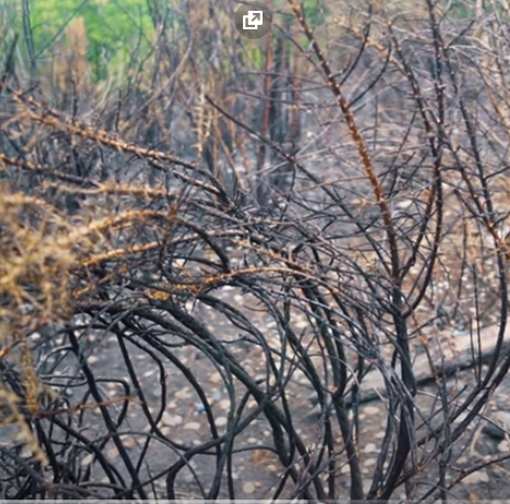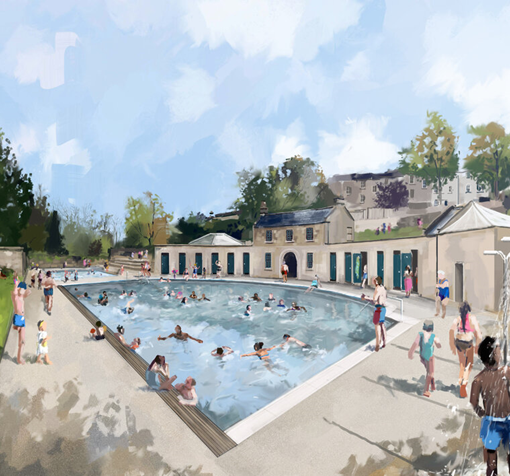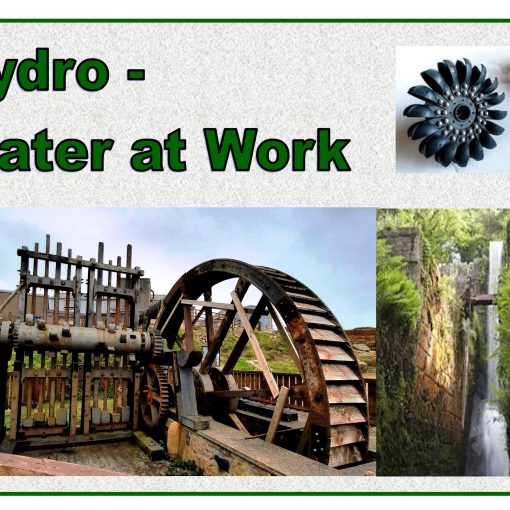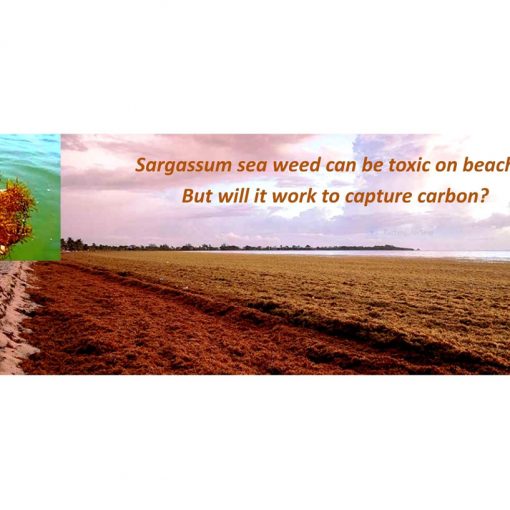16th SEPTEMBER 2022
A Soggy September + Long, Low & Slow, optimal use of electric outdoors and in your home
Most weeks I have 6 days to find anything remarkable in the news, both the grim and the uplifting climate solutions, that I can share. I guess I have been lulled into a sense that not much changes in 6 days, no seismic shifts … until now!
Although much anticipated in theory, the reality of our past week has been a massive shock to the established order of life in Britain. Within 48 hours we had a new government, a new Prime Minister and a new Monarch. Like any major change, it seems best to wait a while. Yes, I can and will look into and report on the track record and likely future impacts of both Liz Truss and King Charles III, but not yet.
So, a lighter very practical blog follows. I hope it is useful.
Rain, rain and more rain
Only a few weeks back, the roadside verges were simply a dust bowl, with a gathering of broken twigs and sticks. Thank goodness rain came back, lots of it. The transformation has been swift and impressive …grass up to 4 inches high in so short a time.



This rain must surely be a godsend to the farmers but also a huge relief to the water companies. However, what do they really do to make the most of it? Across the UK there are hundreds, if not thousands of quite small redundant underground tank reservoirs. They were built in the 20th century, then superseded by much larger areas of water storage in open country. I have been campaigning to have three of these surveyed and brought back into use near Fowey, in Cornwall. But nobody is listening yet. However, the time will probably come, because …
The UK needs 30 new reservoirs to protect water supply from drought.
Yet no new reservoirs have been built here in over 30 years:-
The last major public water supply reservoir to be constructed in the UK was Carsington in 1991, and although a number of water supply reservoirs have been proposed since the 1960’s very few have made it to completion.
An I-News report speaks of many billions of £s to be invested in this long overdue infrastructure. https://inews.co.uk/news/environment/uk-needs-30-new-reservoirs-protect-water-supply-drought-31-years-1793414
We have to create capacity for 3.3 million full bathtubs of water, which England alone badly needs by the 2030s.
Decisions have been taken, planning approval given and development is underway for the very first new reservoir to be built at Havant, near Portsmouth. When I saw the aims I thought to myself, this will chime well with a number of readers: –
The project is an environmentally-led scheme which will secure vital water supplies for the future, while protecting world-renowned chalk streams.
As the nature of the existing site will change, we’ve worked with environmental regulators to create an extensive programme to support the environment on and around the site. This includes the creation and improvement of around 200 hectares of woodland and pasture to support wildlife, and the creation of a 10-hectare wetland on the reservoir’s northern shore, which will be a major boost for threatened bird species. https://www.newcivilengineer.com/latest/green-light-for-uks-first-new-reservoir-in-40-years-11-06-2021/
All sounding very good, but then you see the £100M budget figure that goes with it! Predictable, unfortunately. Faced with a major building or other structural challenge, western governments often respond with overkill. Building on this scale will be so bad in terms of concrete, CO2 emissions in the build process. Can we not make better use of any those older, small local tanks? And even a somewhat different design, much less expensive, that has been tested and found successful in sub-Saharan Africa? This is an extract from Practical Action.Org (thank you Carole Lee):- . https://answers.practicalaction.org/our-resources/item/sand-dams/

Sand dams are an artificial enhancement of a traditional practice based on naturally occurring sand beds, using them to recharge and store water for use. A concrete wall is constructed across the channel at specific sites to trap and hold back the sand during flooding; this creates an additional sub-surface water bank for harvesting. With proper siting the total amount of water available in the sand dams can be over 6000m3. Sand dam technology is not new. In Kenya, it has been used with good outcome in Kitui, Machakos and Samburu districts. Other countries with similar dry environments such as U.S.A, Thailand, Ethiopia and Namibia have also used it.
Could this be applicable in our very different climate, I wonder?
At Meadow Barns, through our most recent interactions with government agencies and charities, we predict the first concern in the UK would most likely be fish welfare. The Rivers Trusts and the Environment Agency are sure to view it with great scepticism, but I look forward to hearing from any of their representatives, about this.

Long, Low & Slow – Outdoors
Last weekend I fell into a conversation with 2 friends, over breakfast. It was all about cunning ways for an individual person to keep warm this winter. We began with a journey down memory lane, as Jeremy recalled a guy who was employed as a dispatch rider, using his own motorbike for deliveries in a city. Now, I have definitely elaborated on this. I doubt very much that it went back as far as 1962, the year of the Big Freeze. But I had fun playing with the idea for a cartoon comic strip effect.





My other friend, Wendy, joined in telling how her version of the Hoodie above, a special plug-in blanket from Lakeland, has become one of her most treasured possessions!
This led me to think what else can we do indoors, by plugging in and using electric heat, Long, Low & Slow?
Electric range cookers
This kind of electric energy, just putting a 13 amp plug into a socket and switching on, then leaving it to run continually is exactly what happens with my Everhot cooker. Last week I sent messages to the supply companies, both based in Gloucestershire – the new Everhot company and the 2nd hand one, https://www.secondhandeverhot.co.uk

I love the way Everhot.co.uk is continually evolving the product to be more sustainable. Not long ago they launched a low cost (£1,400) single oven type, designed to be used like a slow-cooker but also to provide space heat for a small barn, houseboat, conservatory or similar. This is exactly the way I use mine; the charming phrase above, ‘a solar dump’, enables the solar heat to be held in the metal stove body and keep the wall dry. It is also a perfect option instead of a tumble dryer.
I had a very helpful chat with Paul at 2nd hand Everhot, who explained that users should always aim to maintain a constant temperature. But then he reassured me that totally switching off a simmer plate or bottom oven would be OK, to which I responded ‘I have established a continual interchange of glass bottles of water from the bottom oven, which helps me reduce the KW I draw from the electric kettle. I won’t be switching that off!’



Another thing we discussed was use of the hot plates. I don’t use them, because I find a separate induction hob is the fastest and hopefully also the most economical way to go. Brand new dual oven Everhots can have an inbuilt induction hob too, but that is pricey! Some hobs go up to 3000 watts, but the top temperature mine runs is 1,200W for a very short time. Before the 2021 and 22 hike in prices I had read An average estimate for electric hob usage is around 1500 watts per hour – resulting in yearly costs of about £53.00.
More slow cooking
How many times have we read those re-assurances, ‘only uses the same electric as a light bulb?’ in relation to a slow cooker? Let’s see if it is true. The Sun newspaper recently ran the comparison we need. On 13th September they wrote: –
U-Switch have told us that using a slow cooker for
4 hours will cost 36p under the current price cap. Under October’s price cap it will cost 66p.
If you ate a slow cooked meal every day for September, you’d fork out £10.08 for costs. As of October, this will increase to £18.48.
At the EXTREME if you made a slow cooked dinner every day for a year then you would add another £218.16 to your energy bills.
Size of machine and different recipes can lead to higher charges but probably nowhere near the cost of an ordinary oven. U-Switch again: ‘Cooking in the oven is one of the most common ways to prepare dinner, but it is often more expensive to run than other kitchen appliances. Slow cookers tend to be the most efficient option.’

To finish up in the kitchen – ‘One accurate measurement is worth a thousand expert opinions’
Grace Murray Hopper used a plug-in power meter to measure the efficiency of boiling 1 litre of water in 2 types of kettle (stainless steel and plastic) and a microwave. She also measured the gas used to boil a pan of water on a gas hob. The sums are the sort you learn for GCSE science. Kettles; 65% Microwave: 30% Gas kettle: 25% Remember that gas is about a third the cost of electricity per kWh (or Unit or Joule) and also has a third of the CO2 emissions. In this test, gas has a small advantage, which may be improved with a lighter more efficient kettle. The electric kettle has the advantage that it turns itself off automatically. While the microwave was inefficient bringing water to the boil, it was more efficient when only warming it to 50 degrees C at 45%.
Underfloor heating
All the diagrams show that underfloor heating is more efficient than radiators, but it does mean heating a larger area than you probably need, especially if you are working in one computer corner, all day. https://www.thermosphere.com/blog/the-true-cost-for-running-electric-underfloor-heating
I wonder how many readers, if any, are aware of the wonderful product called a ‘Rug Buddy’? It was introduced to me by another Everhot owner, Claire, who swears by the one she has beneath her desk. She says it means she can keep the central heating off or turned down and still be very comfortable at the computer for hours on end. For myself, I have chosen to install the wire mat under a specially sourced waterproof rug, for those quite rare times when I have a bath. It is all part of the pampering, if I plan ahead and plug in the rug a while in advance. It won’t be that cheap, because any device that has to heat up from cold does draw significantly from the supply.

Here is further info and a detailed analysis of the costs
All these figures and comparisons are tiring me out! Too complex. Maybe a fleece and a good ol’ hot water bottle is the easy answer, but even then there are questions to weigh up … in the microwave or from the kettle? I give up! But please do share YOUR tips and stories, for any inventive options on similar lines.
FINALLY 2 DATES for your DIARY Events which I shall explain more fully next time:-
Sept 24th in Cornwall https://www.facebook.com/chacewaterenergygroup/
And October 14 – 16 in Cambridge https://climatechangefestival.zero.cam.ac.uk Best wishes C





2 thoughts on “GF Blog 22 Week 39”
The Everhot may be fine if you want to use it to heat living room. If you just want to cook, slow cooker or microwave will win every time. Not a good idea to use electricity for space heating if you can avoid it! If I had shares in Everhot I would be selling!!!
Good to hear from you Richard thank you. I was agreeing at least to some of what you say, that it isn’t the best for cooking. But I think it works very well to heat my space. Although it is an old granite barn, when re-built it was all Nudura inside and then the granite exterior. It holds the heat that the Everhot generates really well, and the power is from solar.
I wonder why you would be selling your shares?